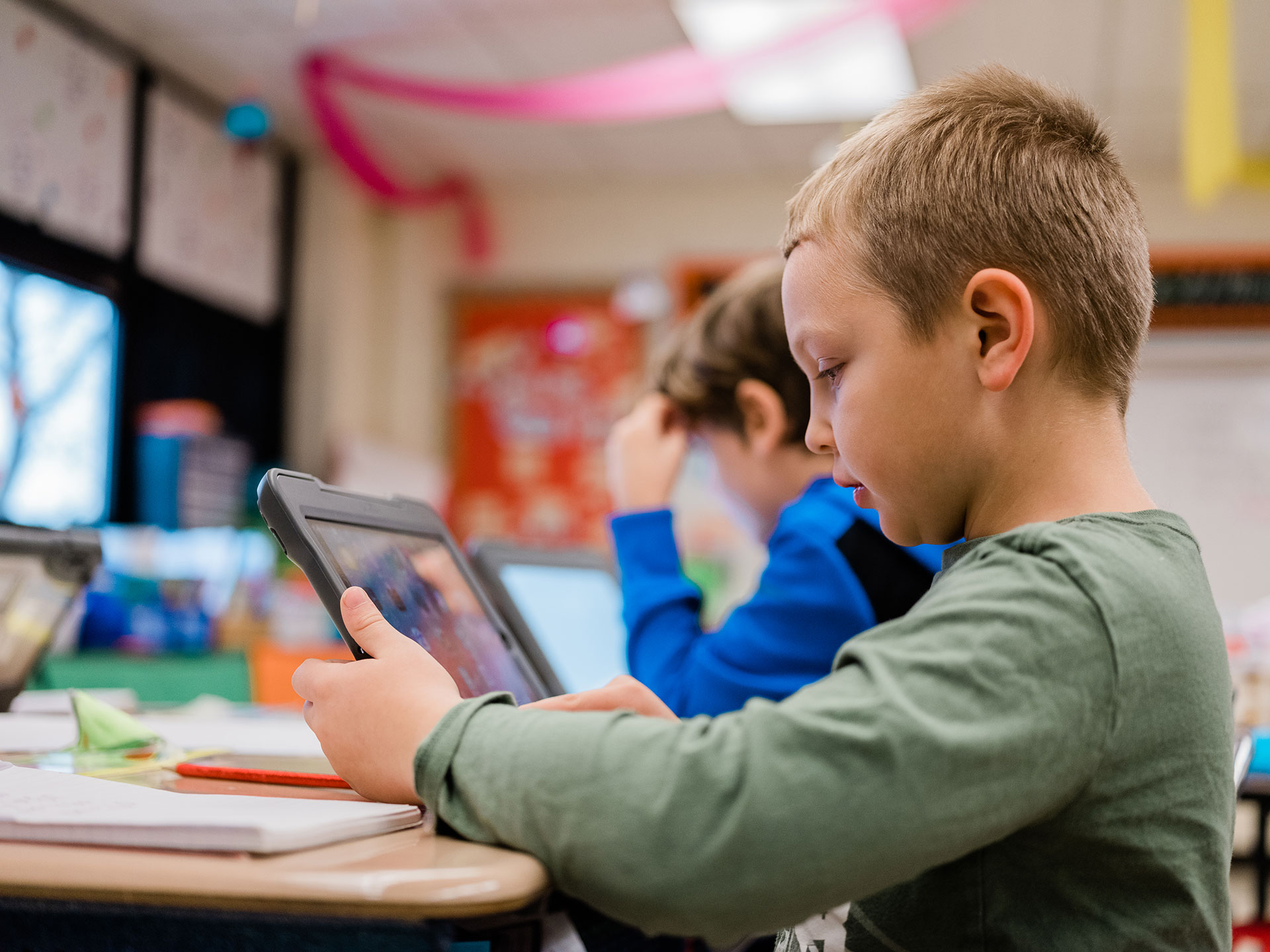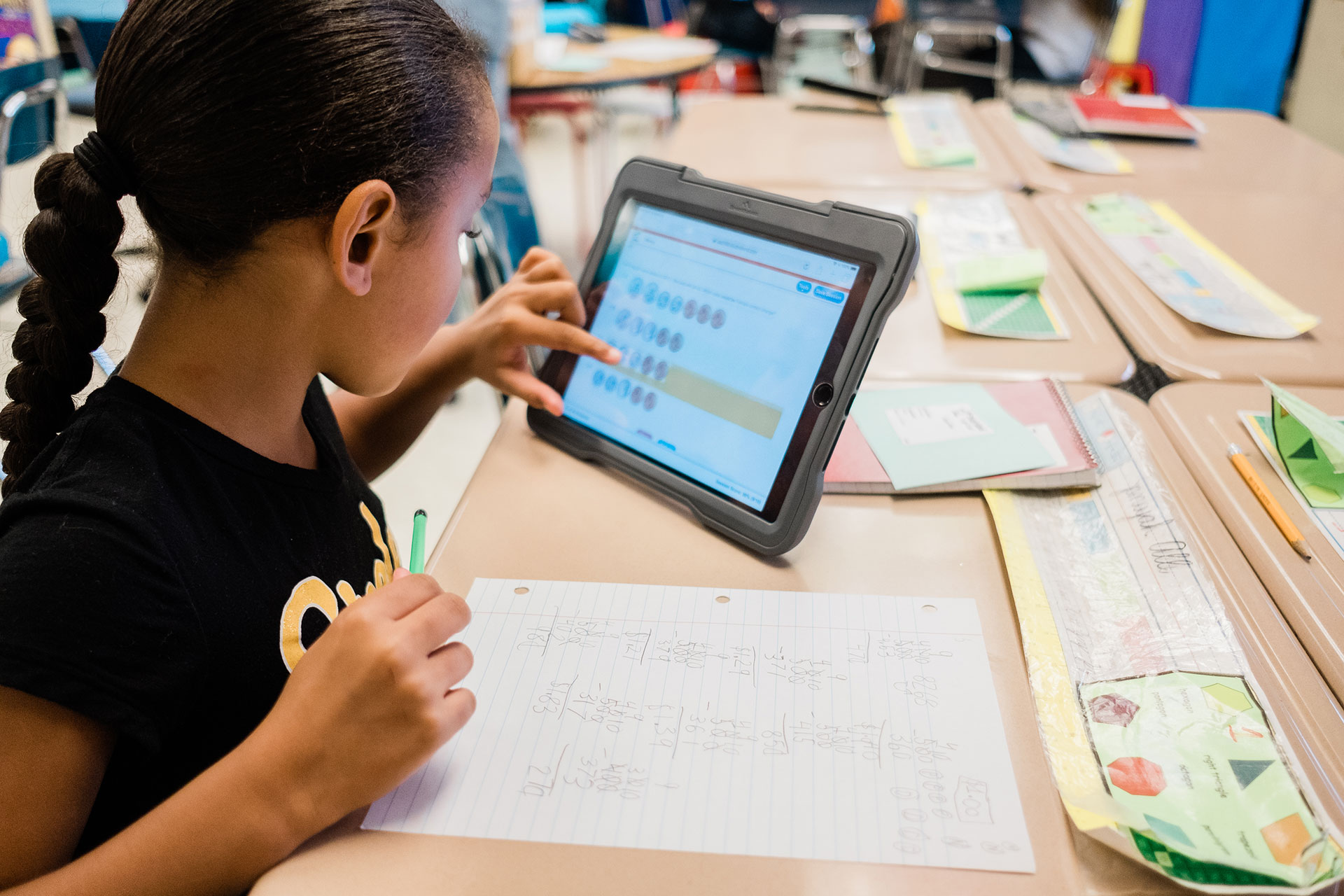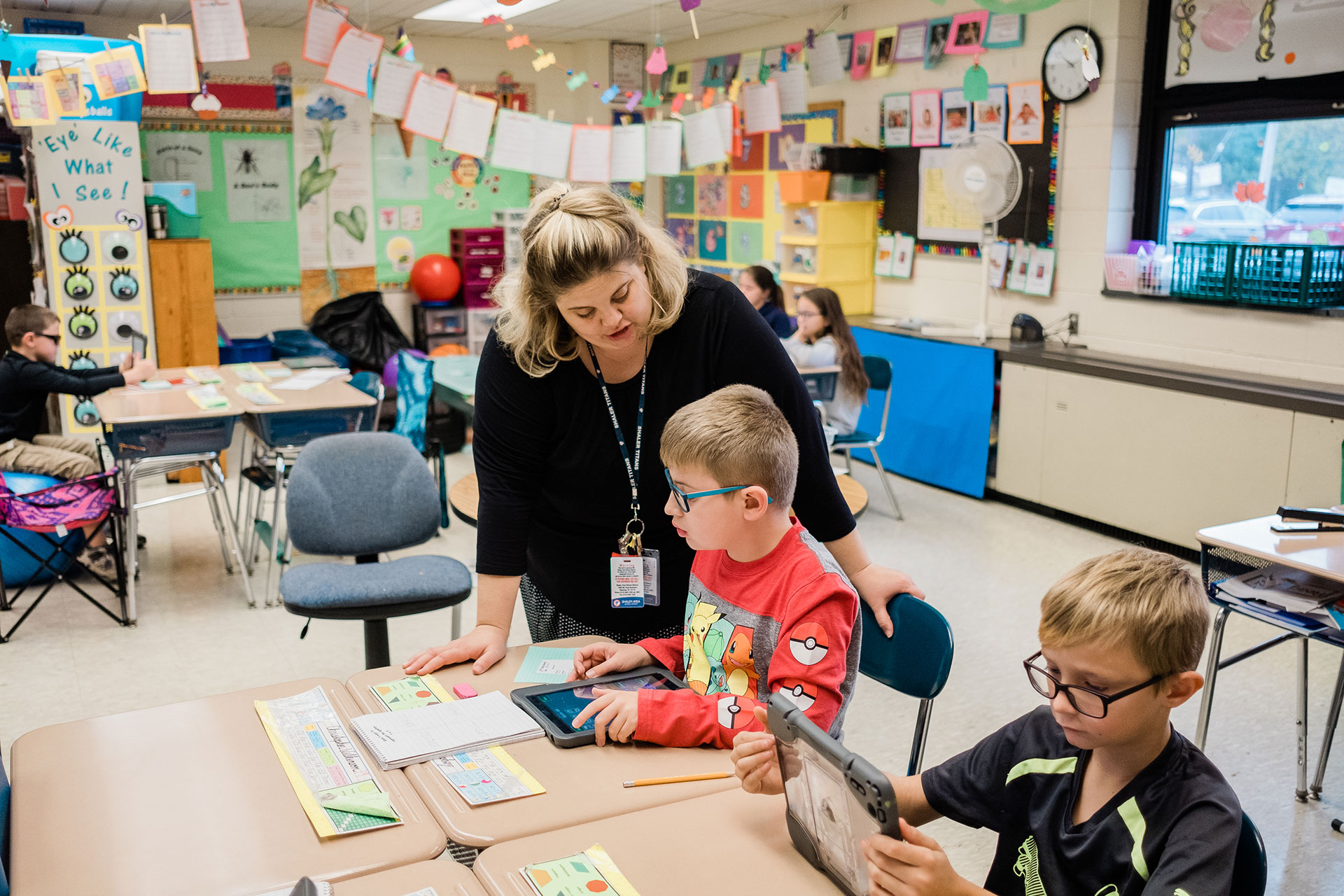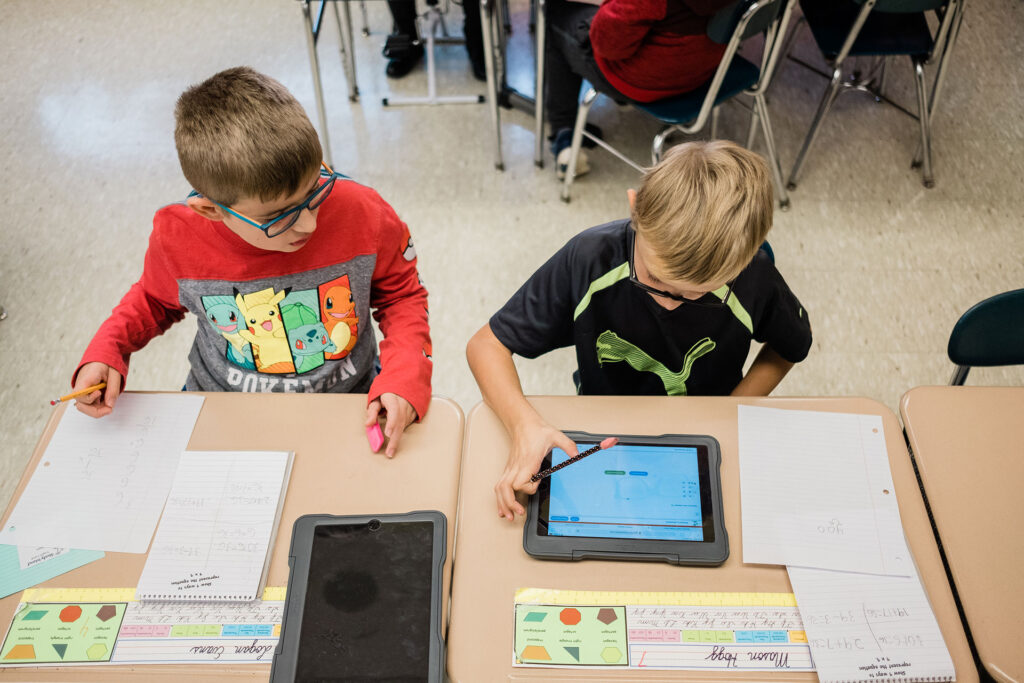“Scissors, let’s roll!”
The three students seated at the Scissors Table here in Kim Young’s third-grade classroom rise and make their way to a table at the back of the room. Young distributes multiplication worksheets and asks the students how they might go about solving the problems.
Meanwhile, the nine other students seated around the room work quietly on iPads, occasionally turning to steno pads to perform a calculation or draw a picture to help them visualize the problem.
It’s mid-morning here at Reserve Primary School, part of Shaler Area School District, and these students are in Young’s classroom for a math intervention period. Young is working with a few students at a time, emphasizing processes and good work habits.
“Are you ever wrong in math if you do the work?” she asks one student. As the group tackles a word problem, she directs another to “Get rid of all the mumbo jumbo” and focus on what the problem is really asking.
Since the summer, Young has had a powerful tool to help her provide this kind of meaningful, individualized attention.
Shaler Area School District is one of four participants in a pilot of Personalized Learning Squared (PL²), a project of the Center for Urban Education at the University of Pittsburgh and the LearnLab at Carnegie Mellon University. PL² uses artificial intelligence to analyze the work the students do on their iPads and provide teachers and parents with a snapshot of student learning.

Each of the four participating school sites is applying PL² differently, giving the LearnLab team a variety of insights into how the app can support educators in providing students with individual attention.
At Shaler, the emphasis is on involving parents in their children’s learning. Parents of the students in Young’s classroom can log into the PL² app to see how many problems a student got right, how long they took to solve certain types of problems, and how often they asked for a “hint.”
“It’s a bridge between home and school,” says Eloise Milligan, coordinator of academic services for the district.
That bridge could be a valuable tool for connecting with parents who may feel less comfortable in a school setting, says Young, who sees PL² as a complement to district efforts to make math more approachable for parents.
“For some parents, school is scary,” says Rebecca Duch, a tutor from the Keystone SMILES AmeriCorps program who has been at Reserve since March 2019.

Duch has been working with PL² since the program began at Reserve in the summer of 2019. The app has helped to curb the “summer slide” phenomenon when students lose some of the skills and knowledge accrued during the school year, she says.
She’s also seen improvement in the students she has worked with during that time, citing the example of a kindergarten student who was struggling with number formation and couldn’t consistently draw the numeral 1.
It’s a perfect example, Duch says, of a specific, concrete skill that a teacher with a dozen or more students, like Young, might miss, and one that could delay other phases of a child’s math learning if unnoticed. But with PL², Duch was prompted that the student needed additional attention and provided with suggested resources.
“There’s a worksheet on how to make the number one, and there’s a song about it,” she says.

With typical class sizes of 13 to 17 students, Young’s ability to provide every student with individual attention is limited. Using the PL² app to record observations on student progress has helped Young catch trends in students’ progress, making her time with each third-grader as meaningful as possible.
“This has made me think about their thinking,” Young says, spurring her to look at math learning through a cognitive and developmental lens. “I’m excited about having this program for a full year.”
